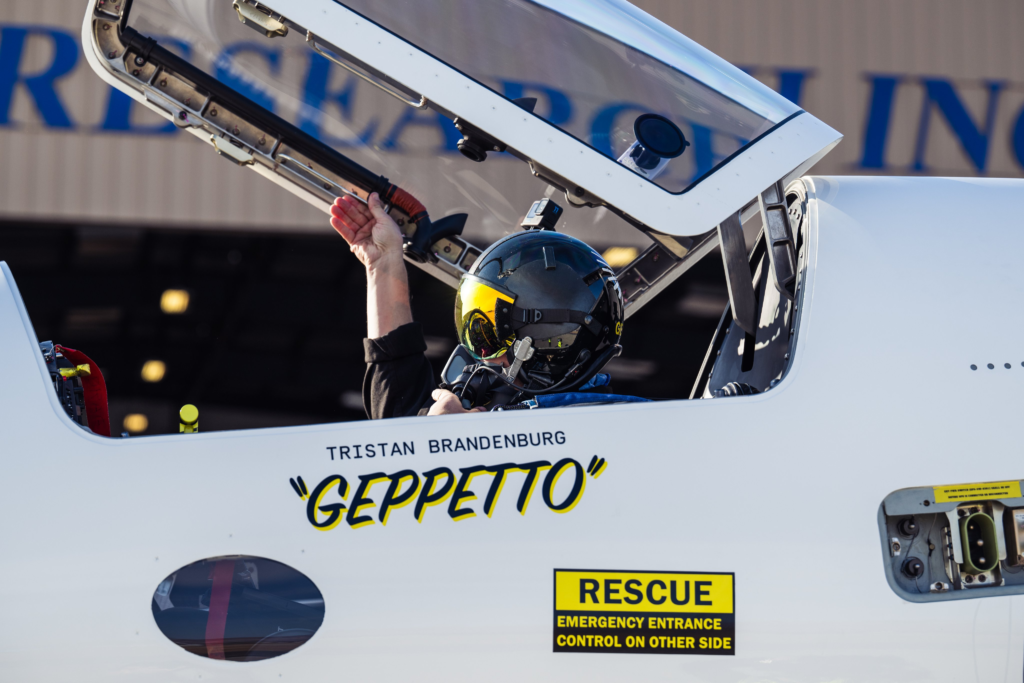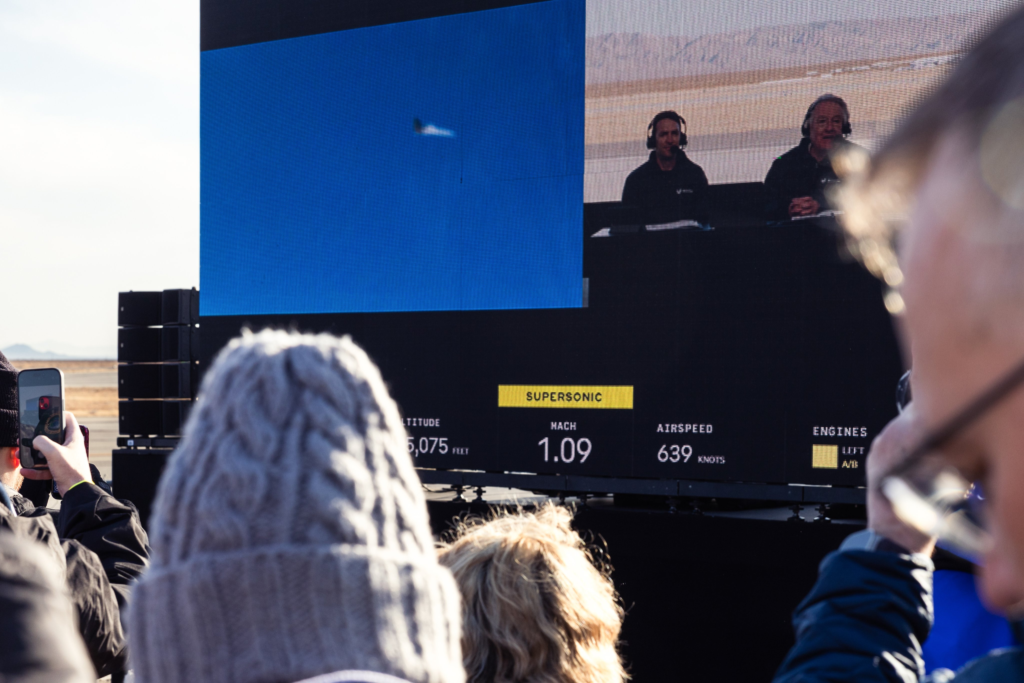The dream of supersonic passenger travel took a major leap forward as Boom Supersonic’s XB-1 demonstrator successfully broke the sound barrier on January 28, 2025. Flying over California’s Mojave Desert, the aircraft reached Mach 1.1, marking a historic moment as the first privately developed civilian supersonic aircraft in history. This milestone brings Boom Supersonic one step closer to its ultimate goal: reviving commercial supersonic travel with its future airliner, the Overture.
A Historic Flight
The XB-1, a sleek one-third-scale demonstrator for Boom’s planned supersonic airliner, took off from the Mojave Air and Space Port at 8:20 a.m. local time. It climbed to an altitude of 35,000 feet before pushing past Mach 1, sustaining supersonic speeds for approximately four minutes. Test pilot Tristan Brandenburg executed three successful supersonic passes, reaching a maximum speed of Mach 1.122 before safely landing at 10:55 a.m.

Image Credit: Boom
This achievement is particularly significant because it is the first time a privately developed supersonic aircraft—one not built by a national government—has broken the sound barrier. While the legendary Concorde and Soviet-built Tupolev Tu-144 were state-funded projects, Boom Supersonic is a commercial enterprise developing supersonic travel for private airlines.
Engineering Marvel: How XB-1 Achieved Supersonic Speed
The XB-1 features cutting-edge aerodynamics and propulsion systems that make supersonic flight feasible and efficient. The aircraft is powered by three Symphony engines, specifically optimized for high-speed travel. Unlike the Concorde, which required a drooping nose for visibility during landing, the XB-1 uses a high-tech camera system on its landing gear, allowing pilots to see the runway clearly.

Image Credit: Boom
Another key aspect of its design is its unique aerodynamic shape, with a downward-curving nose to reduce wave drag and improve stability at high speeds. Engineers also tested the “flutter excitation system” during the flight to analyze how the plane’s structure responds to airflow changes at supersonic speeds, ensuring safety and stability.
The Road to Overture
While the XB-1’s success is groundbreaking, it is just a stepping stone toward Boom Supersonic’s larger vision: the Overture, a full-scale supersonic passenger jet designed to carry up to 64 passengers at speeds of Mach 1.7. The company envisions Overture cutting transatlantic travel times in half, making a flight from New York to London possible in just three and a half hours.
American Airlines and Japan Airlines have already placed orders for the Overture, signalling strong commercial interest in supersonic travel. However, significant challenges remain, particularly in developing a sustainable and commercially viable engine for the Overture. Boom hopes to fire up the Overture’s engine for the first time later this year, bringing it one step closer to reality.
Why This Flight Matters
The success of XB-1 represents more than just a technical achievement—it signifies the potential revival of supersonic passenger travel, which ended with the retirement of the Concorde in 2003. If Boom succeeds, it could mark a new era in aviation, where passengers can travel between continents in record time.
Additionally, Boom’s focus on sustainability is crucial. Unlike the fuel-guzzling Concorde, Boom aims to make the Overture the world’s first supersonic jet powered entirely by sustainable aviation fuel (SAF), reducing its environmental impact.
What’s Next?
Boom Supersonic is already preparing for a second supersonic test flight of the XB-1, which could happen as early as next week. The company also plans to use “Schlieren photography” to capture shock waves around the aircraft during flight, further refining its aerodynamic design.
If all goes according to plan, the Overture could enter service by the early 2030s, revolutionizing global travel. While there are still hurdles to overcome—such as regulatory approvals, engine development, and proving economic viability—Boom Supersonic’s latest achievement proves that the dream of supersonic flight is alive and well.
For now, aviation enthusiasts and industry experts will be closely watching Boom’s progress as it continues to push the boundaries of speed and innovation.



